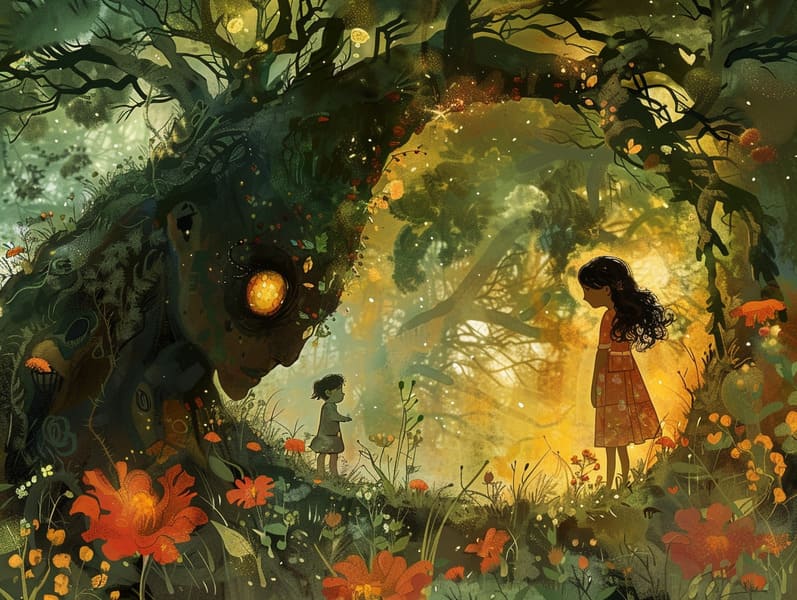The Creation of Traditional Fairy Tales and Its Enduring Delight.
The Creation of Traditional Fairy Tales and Its Enduring Delight.
Blog Article

Vintage fairy tales have old origins. These tales have been recounted from one generation to the next far before they were ever transcribed. They were born from a variety of societies, including Asian traditions. They were initially told among grown-ups, often carrying themes and messages mirroring the societal norms and beliefs of the time.
The renowned Brothers Grimm, Jacob and Wilhelm, were among the first to compile and release many of these beloved tales. Their compilation, "Grimm's Fairy Tales," included stories like "The True Bride," "The Bread Crumb Trail," and "Little Snow White," which have since become pillars in the world of traditional fairy tales. Similarly, Hans Andersen's enchanting fairy tales, such as "The Mermaid," and "The Ugly Duckling," have captivated hearts worldwide, cementing their place in the pantheon of iconic fairy tales.
Though they are old, these tales remain as significant as ever, especially as children's bedtime stories. These charming stories are now available in different formats, including artistically illustrated books, captivating animations, and free fairy tales online.
Their lasting appeal can be attributed to several fascinating points:
Crucial Morals: Old fairy tales often teach important moral lessons. Narratives like "The Wolf and the Liar" teach the importance of truth, while "The Tortoise and the Hare" emphasize the values of resolve and modesty. These narratives offer children clear distinctions between ethical and unethical, helping to shape their moral compass in a mild yet profound way.
Empathy and Understanding: Traditional fairy tales frequently depict heroines facing problems and hurdles, fostering young listeners to comprehend with their struggles and back their triumphs. For instance, "Beauty's Beast" points out the value of valuing inner qualities to appreciate the real person of a individual, promoting understanding and perception.
Cultural Comprehension: Many fairy tales are rich in the cultural contexts from which they bloomed. Immersing in these stories can provide enlightening views into different social structures, building a sense of world respect and appreciation.
Creativity and Fantasy: The enchanted elements in timeless fairy tales—spells and potions—fuel children’s visions. These fairy tales transport readers to otherworldly realms, motivating fantastical thinking and a sense of astonishment that continues a lifetime.
Old fairy tales are not only magical but also illuminating. They act as magical tools in strengthening various mind and heart abilities in kids. When fairy tales are voiced, they promote verbal skills by teaching new phrases and detailed sentence structures. This practice also improves auditory perception and concentration, as kids remain attentive, enthusiastic to see what happens next.
Furthermore, read more examining the themes and characters of fairy tales can enhance analytical skills and thinking skills. Kids are instructed to notice patterns, forecast, and make sense of cause and effect. These explorations also boost little ones speak out their thoughts and feelings, boosting their emotional intelligence.
In today’s digital age, the availability of web-based fairy tales has made these narratives more reachable than ever. Internet sites and apps extend wide arrays of classic fairy tales that can be experienced or listened to anytime, anywhere. Fairy tales voiced are particularly well-liked, extending an enjoyable way for kids to be a part of these charming tales. Audio stories and read-out-loud stories guide characters and settings to life, often joined by magical soundtracks and instrumentals that heighten the narrative experience.
The persistent attraction of ancient fairy tales lies in their ability to adapt to present eras while holding onto their basic principles. Contemporary updates of these fairy tales often feature more inclusive figures and modern settings, making them relevant to today’s audience. However, the fundamental themes of valor, benevolence, and fair play remain unchanged, continuing to impact children of all ages.
Traditional fairy tales also offer a sense of ease and knowability. They put out a ordered narrative with a obvious beginning, middle, and end, often winding up with the culmination of conflicts and the triumph of morality over wickedness. This assuredness can be consoling for young readers, giving a sense of steadiness in an ever-changing world.
Timeless fairy tales continue to entrance and inform new generations, maintaining their wonder and importance in modern society. As nighttime stories for kids, they allow a perfect blend of magic and knowledge, nurturing moral values, empathy, and creativity. The accessibility of web-based fairy tales and the commonness of fairy tales told out loud affirm that these ancient narratives remain available to new generations.
By perpetuating and relating these stories, we continue to cherish the rich tapestry of myths and cultural heritage. Whether you are seeing a artistically illustrated book, accessing a web-based library, or listening on an read-aloud book, the wonder of classic fairy tales is always within reach. These fairy tales emphasize of the unceasing strength of fairy tales and its ability to tie us across time and space.
Even if you are delving into a gorgeously illustrated book, perusing a digital collection, or hearing an audiobook, the grace of bedtime fairy tales is always within reach.
These tales convey of the perpetual power of tales and its ability to gather us across generations and cultures, forging a link that fascinates and enlightens alike.